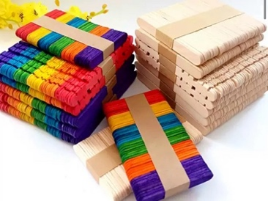Free Play and Loose Parts
-
What is free play?
-
Free play is not limited to outdoor free play or play in nature.
-
It can be an individual time to create artwork, for example by making use of the loose parts.
-
It can be in the form of child-initiated play activities during the self-selected period.
-
-
The elements of exploration
-
Free play should highlight the elements of exploration, involving the child using all their senses to search, discover, and learn more about something.
-
Exploratory play activities include cooking, outdoor nature walks, building and taking things apart, mixing paint to find primary and secondary colors, sand, water, messy play, listening to a noise, music, airplane flying, etc.
-
Through exploratory play, children learn about things, such as the relationships between shapes, spatial relations, numbers and patterns, etc.
-
Loose Parts (Materials)










Free play (Class Activity) – Corn Plasticines






Free play (Class Activity) – Loose Parts







References
- Curriculum Development Council. (2017). Kindergarten education curriculum guide: Joyful learning through play, balanced development all the way. https://www.edb.gov.hk/attachment/en/curriculum-development/major-level-of-edu/preprimary/ENG_KGECG_2017.pdf




